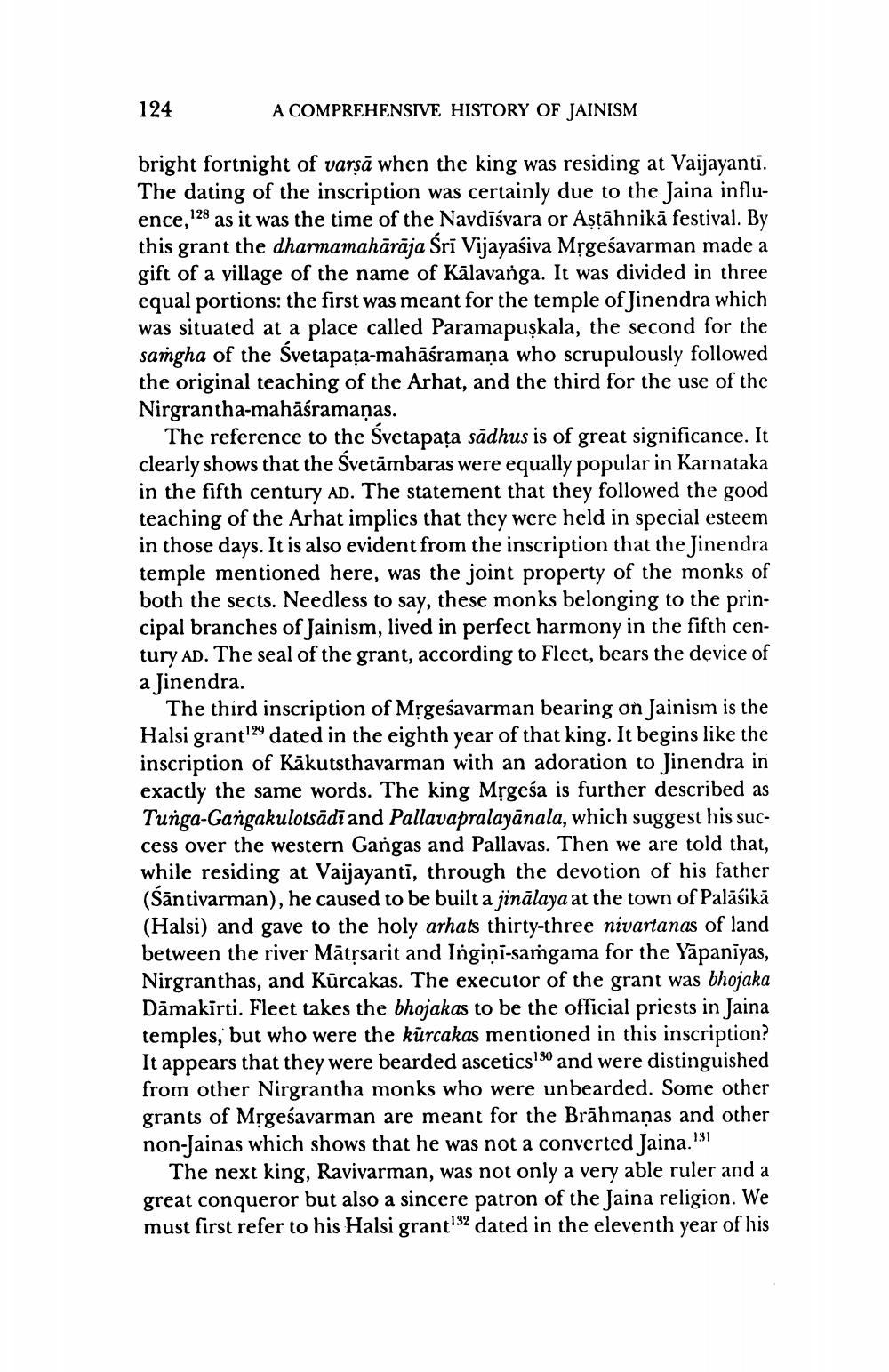________________
124
A COMPREHENSIVE HISTORY OF JAINISM
bright fortnight of varşā when the king was residing at Vaijayanti. The dating of the inscription was certainly due to the Jaina influence, 128 as it was the time of the Navdīśvara or Astāhnikā festival. By this grant the dharmamahārāja Sri Vijayaśiva Mrgeśavarman made a gift of a village of the name of Kālavanga. It was divided in three equal portions: the first was meant for the temple of Jinendra which was situated at a place called Paramapușkala, the second for the samgha of the Svetapata-mahāśramana who scrupulously followed the original teaching of the Arhat, and the third for the use of the Nirgrantha-mahāśramaņas.
The reference to the Svetapata sädhus is of great significance. It clearly shows that the Svetāmbaras were equally popular in Karnataka in the fifth century AD. The statement that they followed the good teaching of the Arhat implies that they were held in special esteem in those days. It is also evident from the inscription that the Jinendra temple mentioned here, was the joint property of the monks of both the sects. Needless to say, these monks belonging to the principal branches of Jainism, lived in perfect harmony in the fifth century AD. The seal of the grant, according to Fleet, bears the device of a Jinendra.
The third inscription of Mrgeśavarman bearing on Jainism is the Halsi grant129 dated in the eighth year of that king. It begins like the inscription of Kākutsthavarman with an adoration to Jinendra in exactly the same words. The king Msgeśa is further described as Tunga-Gangakulotsādi and Pallavapralayānala, which suggest his suc cess over the western Gangas and Pallavas. Then we are told that, while residing at Vaijayanti, through the devotion of his father (Sāntivarman), he caused to be built a jinālaya at the town of Palāśikā (Halsi) and gave to the holy arhats thirty-three nivartanas of land between the river Mātņsarit and Ingiņi-samgama for the Yāpaniyas, Nirgranthas, and Kurcakas. The executor of the grant was bhojaka Dāmakirti. Fleet takes the bhojakas to be the official priests in Jaina temples, but who were the kurcakas mentioned in this inscription? It appears that they were bearded ascetics 50 and were distinguished from other Nirgrantha monks who were unbearded. Some other grants of Mrgeśavarman are meant for the Brāhmanas and other non-Jainas which shows that he was not a converted Jaina.131
The next king, Ravivarman, was not only a very able ruler and a great conqueror but also a sincere patron of the Jaina religion. We must first refer to his Halsi grant'32 dated in the eleventh year of his




